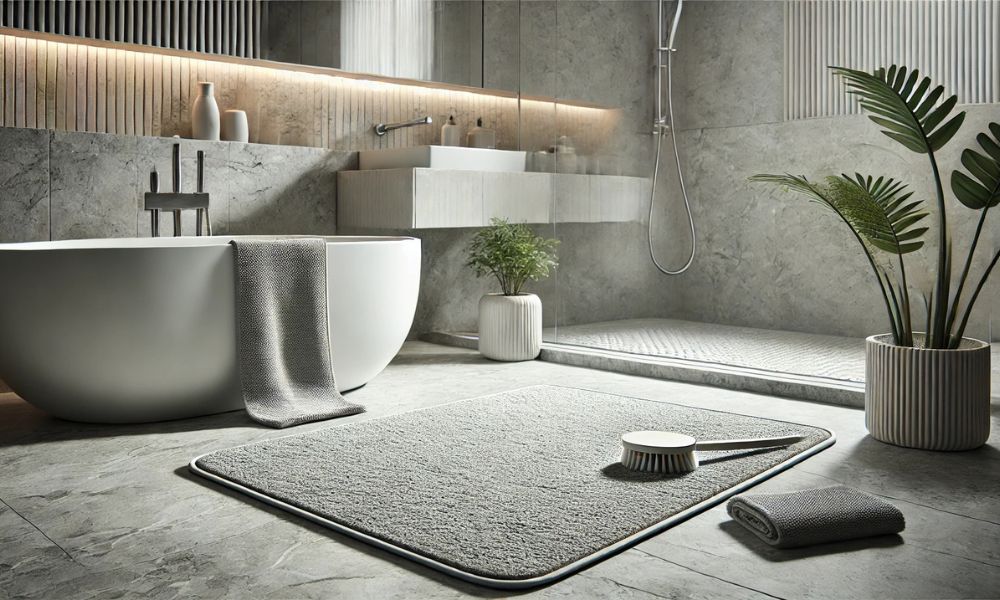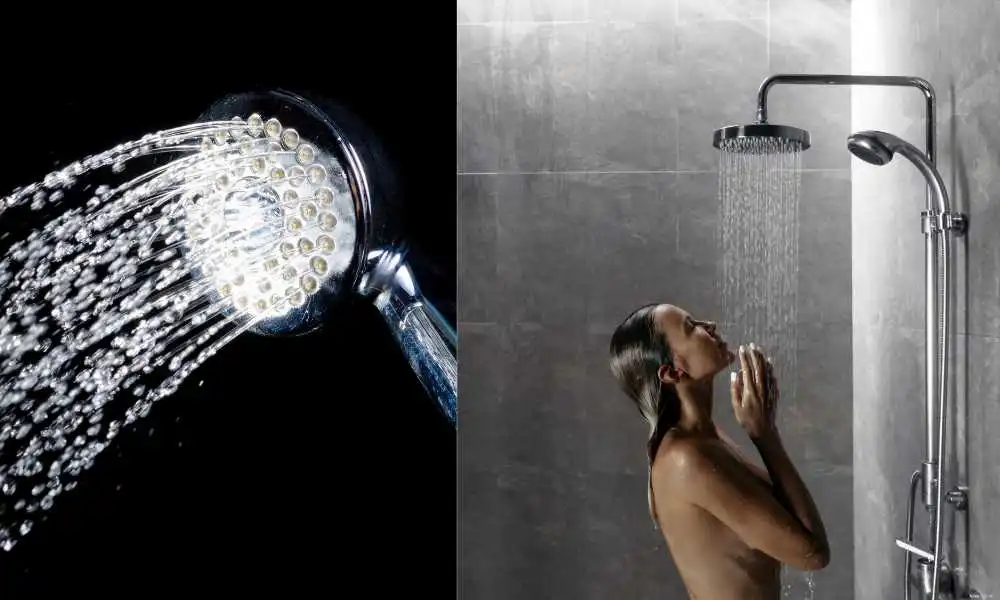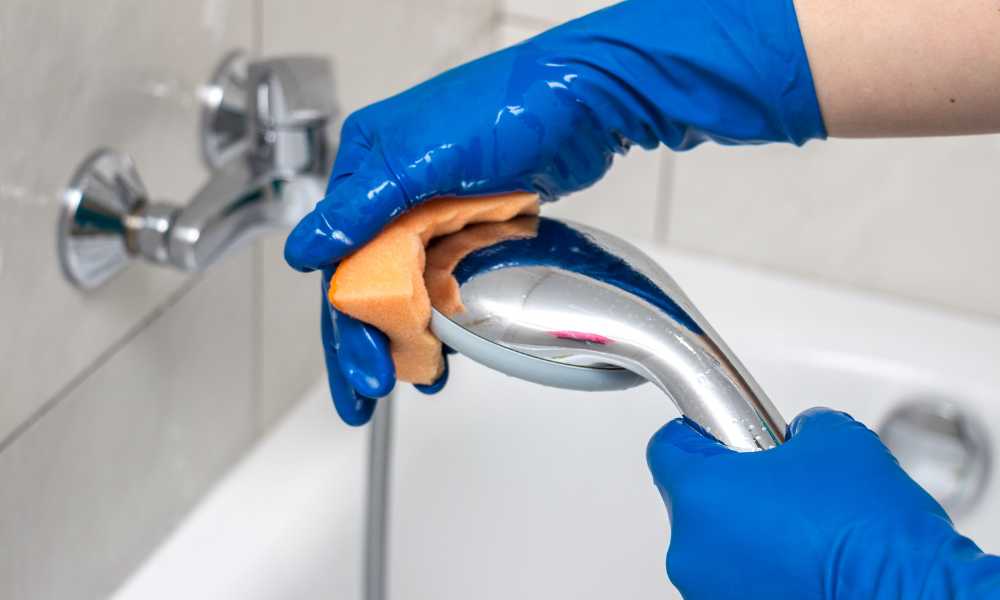Clean stone bath mats have revolutionized bathroom aesthetics and functionality. Unlike fabric mats, these sleek, minimalist designs combine elegance with exceptional practicality, offering rapid water absorption and a hygienic alternative for your home. However, as with any household item, maintaining their beauty and performance requires regular care.
Cleaning a stone bath mat might seem intimidating at first glance, but the process is simpler than you’d expect. With the right techniques and a bit of attention, you can preserve its absorbent properties, prevent stains, and ensure it remains a stylish centerpiece of your bathroom. Whether you’re dealing with daily wear or tackling winter-specific challenges, learning how to clean a stone bath mat will keep it looking pristine for years to come.
What Are Stone Bath Mats?
Stone bath mats are innovative bathroom accessories designed to provide both functionality and style. Unlike traditional fabric mats, these are made from materials like diatomaceous earth or natural stone. They are known for their rapid water absorption and quick-drying properties, making them a popular choice for modern households. With their sleek and minimalist design, stone drying mats effortlessly blend into contemporary bathroom aesthetics while offering superior practicality.
Understanding The Material And Composition
The secret behind a stone bath mat’s efficiency lies in its material. Most are crafted from diatomaceous earth, a naturally occurring sedimentary rock formed from fossilized algae. This material is highly porous, enabling it to absorb water instantly and evaporate it just as quickly. Its antimicrobial properties help inhibit the growth of bacteria, mold, and mildew. Other stone mats may use natural minerals like travertine or granite, which also possess durability and moisture-resistant qualities. The composition not only ensures superior performance but also enhances the mat’s longevity compared to traditional options.
Benefits Of Using Rock Bath Mats Over Traditional Options
- Quick Drying: stone drying mats dry within minutes, preventing water pooling and dampness.
- Hygienic: Their antimicrobial properties minimize the risk of mold and bacteria growth.
- Durability: Unlike fabric mats that degrade over time, stone mats maintain their form and function for years.
- Eco-Friendly: They require less frequent washing, reducing water usage and energy consumption.
- Elegant Design: Their sleek, minimalist look adds a touch of sophistication to any bathroom.
- Slip Resistance: Stone mats provide a sturdy, non-slip surface, enhancing bathroom safety.
Why Cleaning Your Stone Bath Mat Matters
Regular cleaning is essential to maintain the mat’s effectiveness and appearance. Over time, dirt, oils, and soap residue can accumulate, compromising the stone’s natural absorbent properties. Cleaning prevents discoloration, unpleasant odors, and bacterial growth. Additionally, proper care helps protect the mat from wear and tear, ensuring it remains both functional and visually appealing. A clean stone bath mat not only performs better but also contributes to a healthier bathroom environment.
Signs Your Stone Bath Mat Needs Cleaning
- Visible Stains: Dark spots or discoloration can indicate trapped dirt or soap residue.
- Persistent Odors: A musty or unpleasant smell often points to bacteria or mold buildup.
- Texture Changes: A slippery or grainy surface suggests the presence of grime or residue.
- Reduced Absorption: If water lingers on the surface, the mat may need a thorough cleaning.
Tools You’ll Need For Cleaning Rock Bath Mats
- Soft-Bristled Brush
- Mild Detergent
- Microfiber Cloths
- Baking Soda (Optional)
- Clean Water
- Polishing Pad (Optional)
Step-By-Step Guide To Cleaning Rock Bath Mats
Step 1: Prepping The Surface For Cleaning

Before starting the cleaning process, ensure the stone bath mat is free of any loose debris or dust particles. Begin by shaking the mat gently to dislodge any surface dirt. For a more thorough preparation, use a soft, dry cloth or a gentle brush to sweep away lingering dust or particles that may scratch the mat during cleaning. Pay close attention to the edges and grooves, as dirt often settles in these areas. This preparatory step is crucial to avoid abrasive damage when applying cleaning solutions.
Step 2: Choosing The Right Cleaning Solution
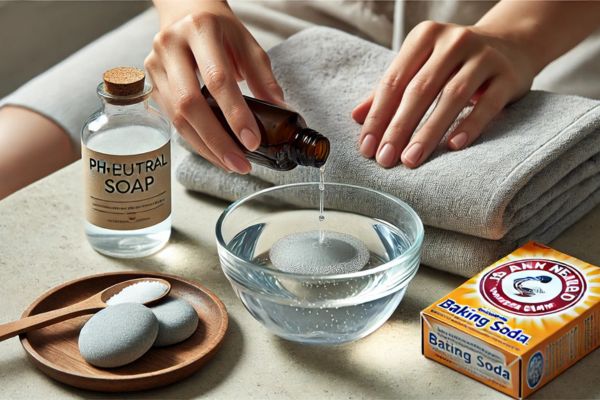
Selecting the appropriate cleaning solution is vital to preserving the integrity of your stone bath mat. In a small container or bowl, mix warm water with a few drops of mild detergent or pH-neutral soap. The detergent should be free of harsh chemicals, acids, or bleach, as these can corrode the stone’s surface or compromise its natural absorbency. If you prefer a natural alternative, you can substitute the detergent with a mixture of warm water and baking soda. Stir the solution until it’s well blended, creating a gentle but effective cleaning agent that’s safe for the material.
Step 3: Gently Scrubbing The Surface Without Damage
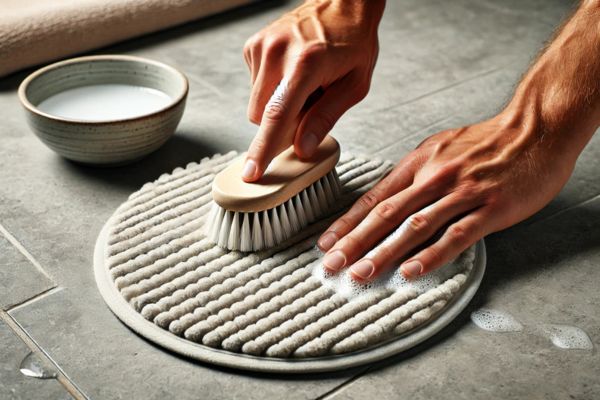
Dip a soft-bristled brush or a non-abrasive sponge into your prepared cleaning solution. Begin scrubbing the mat in small, circular motions, ensuring you cover the entire surface. Pay extra attention to stained or discolored areas, applying slightly more pressure in these spots without being too aggressive. Avoid using abrasive scrubbers or wire brushes, as they can leave scratches or dull the mat’s finish. If you encounter stubborn stains, reapply the cleaning solution and let it sit for 5–10 minutes to loosen the grime before scrubbing again.
Step 4: Rinsing Properly For A Residue-Free Finish
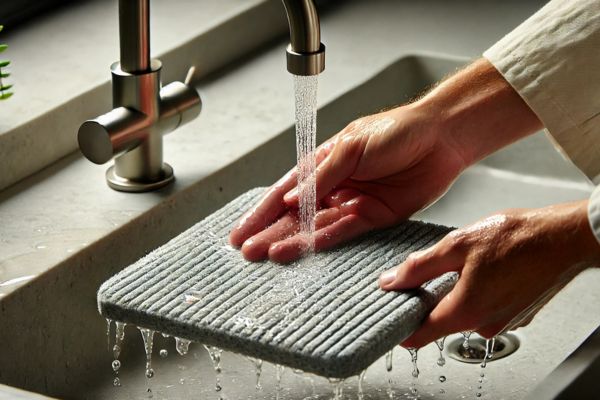
After thoroughly scrubbing the mat, it’s time to rinse away the cleaning solution. Use lukewarm, clean water to rinse the mat, either under a faucet or by pouring water over it gently. Ensure all soap residue is removed, as leftover detergent can leave streaks or reduce the mat’s water-absorbing capabilities. For an even rinse, tilt the mat slightly to let the water run off evenly, paying attention to grooves or textured areas where soap may linger.
Step 5: Drying Techniques To Avoid Moisture Retention
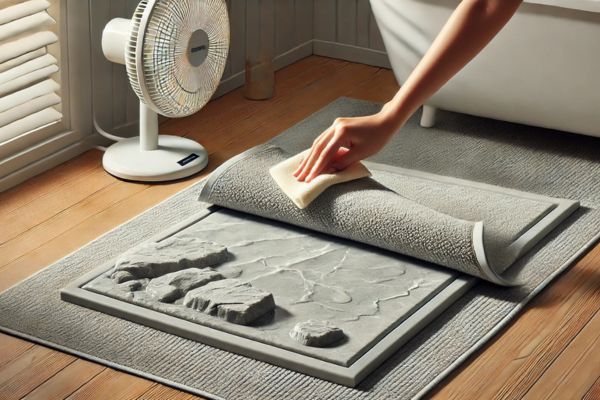
Proper drying is essential to prevent moisture buildup, which can lead to mildew or weaken the mat’s structure over time. Start by blotting the surface with a microfiber cloth, which is highly absorbent and won’t scratch the stone. Once most of the water has been absorbed, place the mat in a well-ventilated area to air dry completely. Avoid direct sunlight, as prolonged exposure can cause the stone to fade or crack. If possible, prop the mat at an angle to ensure even drying and to prevent water from pooling in any crevices. For faster results, you can use a fan to increase airflow around the mat.
How Do You Clean Stone Bath Mats In Winter?
Clean Bath Mat With Suction Cups, Winter brings its own set of challenges when it comes to maintaining your stone drying mat. With colder temperatures and increased humidity, drying can take longer, making proper care even more critical. Start by following your usual cleaning routine—shake off debris, use a mild detergent, and rinse thoroughly. However, during winter, ensure the mat is dried completely after each use.
To speed up the drying process, place the mat in a warm, ventilated area, away from direct sunlight or heating elements that could cause cracking. If your bathroom tends to stay damp in winter, consider using a dehumidifier to prevent excess moisture from settling on the mat. Storing the mat indoors when not in use, especially if it’s located near a drafty window or exterior wall, can also protect it from freezing and cracking.
How Often Should You Replace Stone Bath Mats?
Rock bath mats are designed to be durable and long-lasting, but they are not indestructible. Signs that it might be time for a replacement include:
- Cracks or Chips: Visible damage to the surface indicates the mat’s integrity has been compromised.
- Loss of Absorption: If water pools on the mat instead of being absorbed, it may no longer be functional.
- Persistent Stains or Odors: When cleaning no longer restores its appearance or freshness, it’s time to invest in a new one.
On average, a well-maintained stone drying mat can last several years. However, its lifespan depends on factors such as material quality, frequency of use, and cleaning habits.
Can You Use Stone Bath Mats Outdoors?
Yes, stone drying mats can be used outdoors, but they require additional care to withstand environmental elements. For patios, pool areas, or garden showers, they offer a slip-resistant surface and quick-drying capabilities. However, exposure to rain, dirt, and temperature fluctuations demands more frequent cleaning and resealing to protect the mat’s structure.
To extend its durability outdoors:
- Apply a water-resistant sealant to protect against moisture damage.
- Clean regularly to remove dirt, mud, or algae that may accumulate.
- Store the mat indoors during extreme weather conditions, such as heavy rains or freezing temperatures.
Eco-Friendly Tips For Maintaining Stone Bath Mats
Caring for your stone drying mat doesn’t have to harm the environment. Here are some sustainable practices:
- Biodegradable Cleaners: Opt for eco-friendly, pH-neutral cleaning solutions that are gentle on the stone and safe for the planet.
- Minimal Water Usage: Use a damp cloth for spot cleaning instead of rinsing the entire mat under running water.
- Natural Stain Removal: For stubborn stains, use baking soda or a mixture of water and isopropyl alcohol instead of harsh chemicals.
- Repurpose Old Mats: If your mat has reached the end of its life, consider repurposing it as a stepping stone in your garden or as a decorative piece for outdoor spaces.
These small efforts can reduce your environmental footprint while keeping your stone drying mat in excellent condition.
Conclusion
Maintaining a stone bath mat is simpler than it seems, but it requires consistency and attention to detail. From cleaning in winter to ensuring its durability outdoors, proper care enhances its lifespan and functionality. Regular cleaning preserves its natural beauty, while eco-friendly practices align with sustainable living. Whether indoors or out, a well-maintained stone drying mat remains a stylish and practical addition to any space, elevating your bathroom or outdoor area with elegance and utility. By following these tips, you can enjoy its benefits for years to come, ensuring both a cleaner home and a greener planet.
